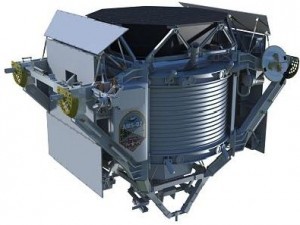NLR developed a complex cooling system for equipment on the International Space Station, for a mission to search for antimatter and dark matter.
After over 10 years of preparation, a cooling system developed by NLR for a specialised sensor hitched a ride on a space shuttle before being installed on board the International Space Station (ISS). The sensor detects cosmic particles and is known as the Alpha Magnetic Spectrometer (AMS). Thanks to the Tracker Thermal Control System (TTCS) it is now fully operational. The AMS consists of a magnet that attracts or repels charged cosmic particles. The magnet contains eight silicon plates to track the path of the particle through the magnet. Hypersensitive electronics reconstruct the path of each particle with great precision, to deduce whether they are antimatter or not.
Heat generated by the electronics and other peripherals can impair the accuracy of the measurements. The fact that ISS is located alternately in the sun and in the shadow of the Earth, or is at times coupled to a space shuttle, causes thermal fluctuation. NLR developed a heat-transfer system that dissipates the excess heat via two radiators in the space station. Allowance had to be made for the extremely limited space, a factor that must always be taken into account when designing equipment for space missions. CO2 was chosen as the heat-transfer medium, because its volume as a liquid is only slightly smaller than its volume in vapour state. This marginal difference in volume made it possible to use narrow-gauge metal piping.
Under NLR supervision, the cooling equipment was developed by an international cooperative consisting of American, Chinese, Taiwanese, Italian and Swiss companies and know-ledge enterprises. It is expected that AMS and the TTCS will remain operational for at least 10 years.

